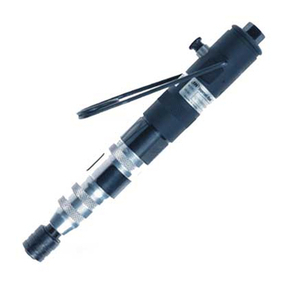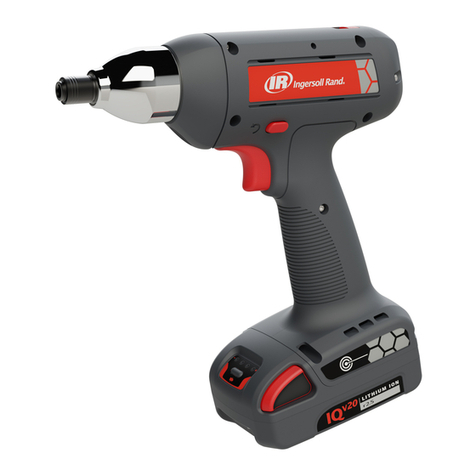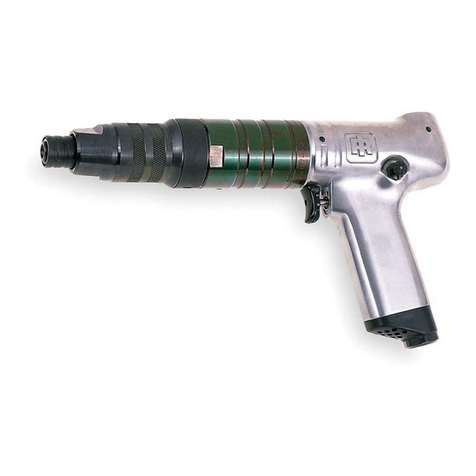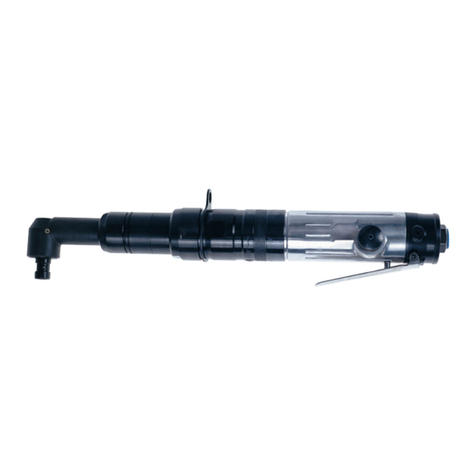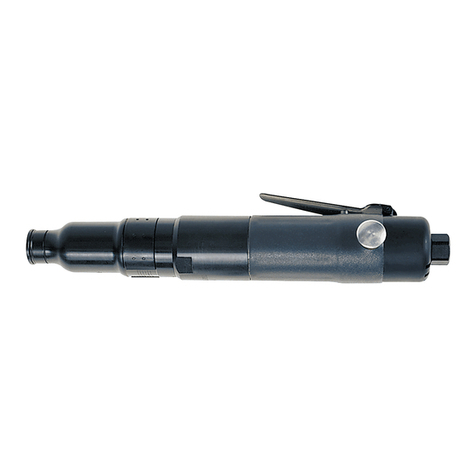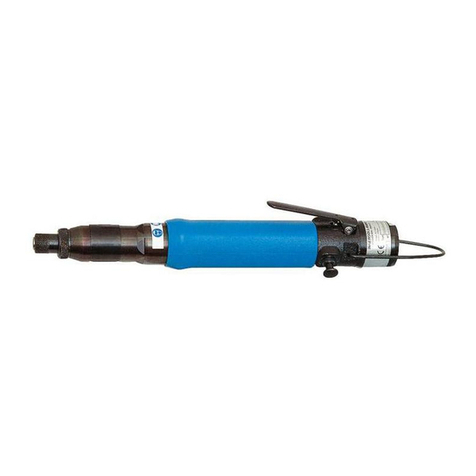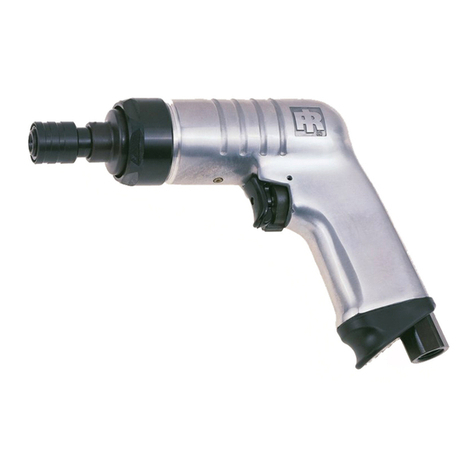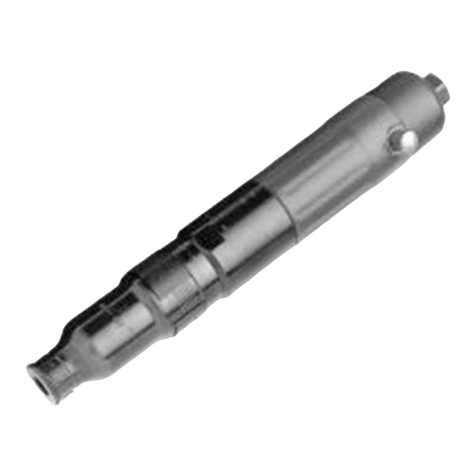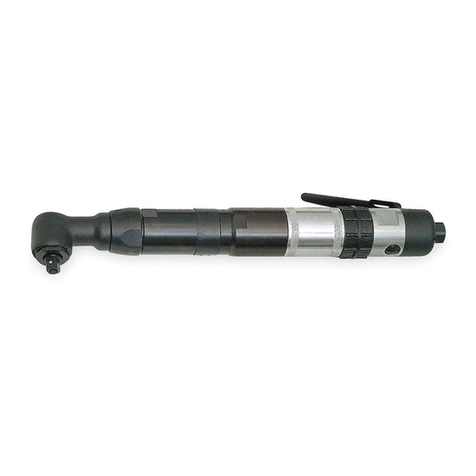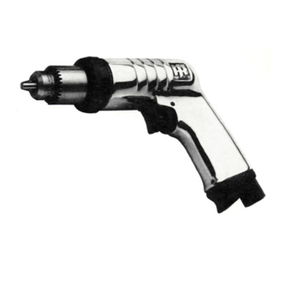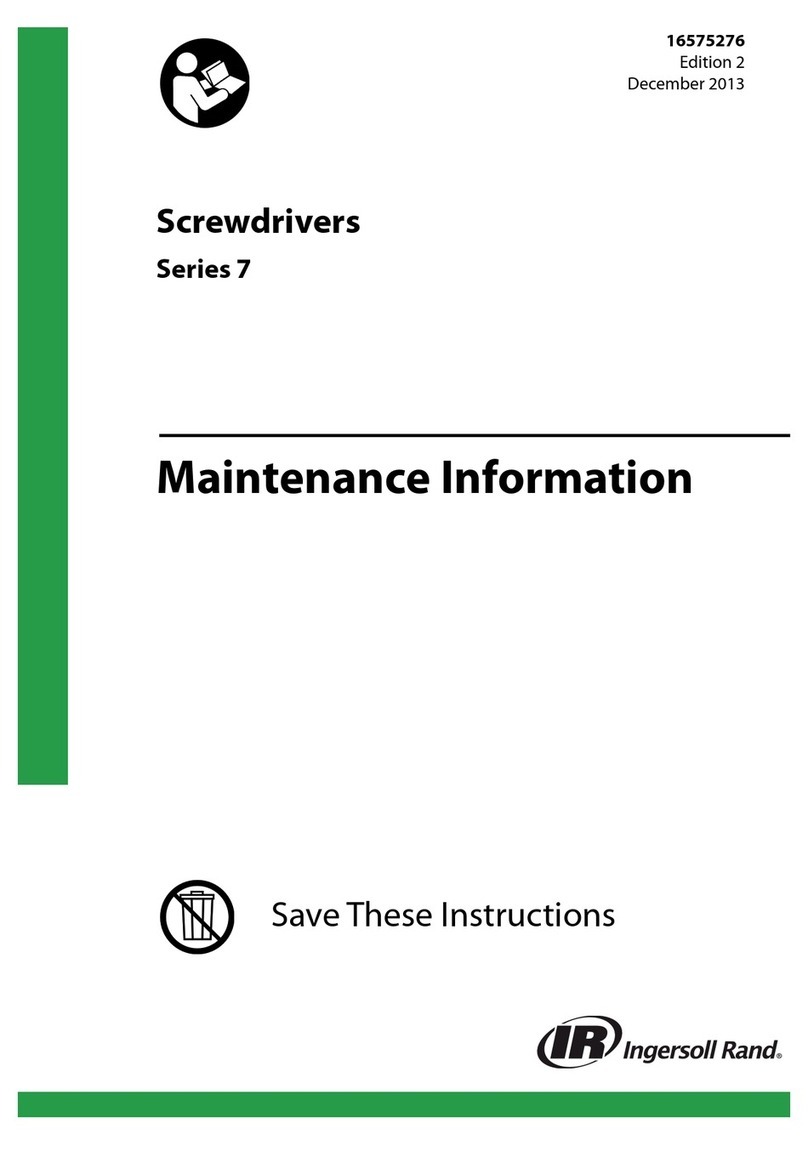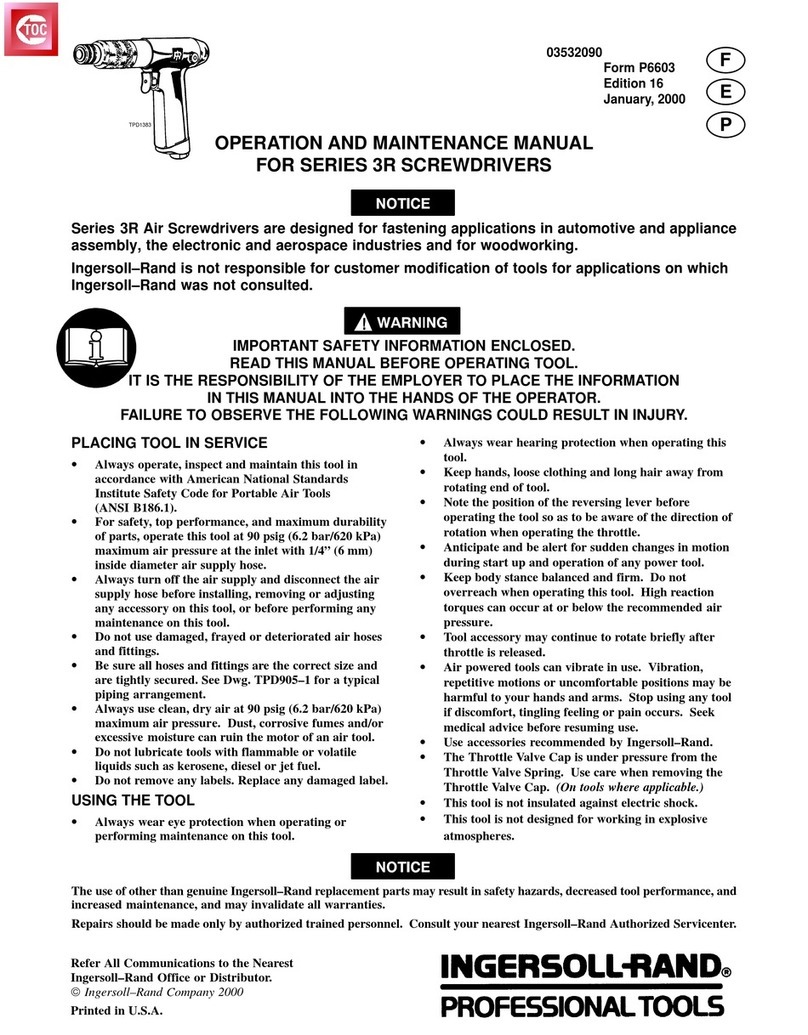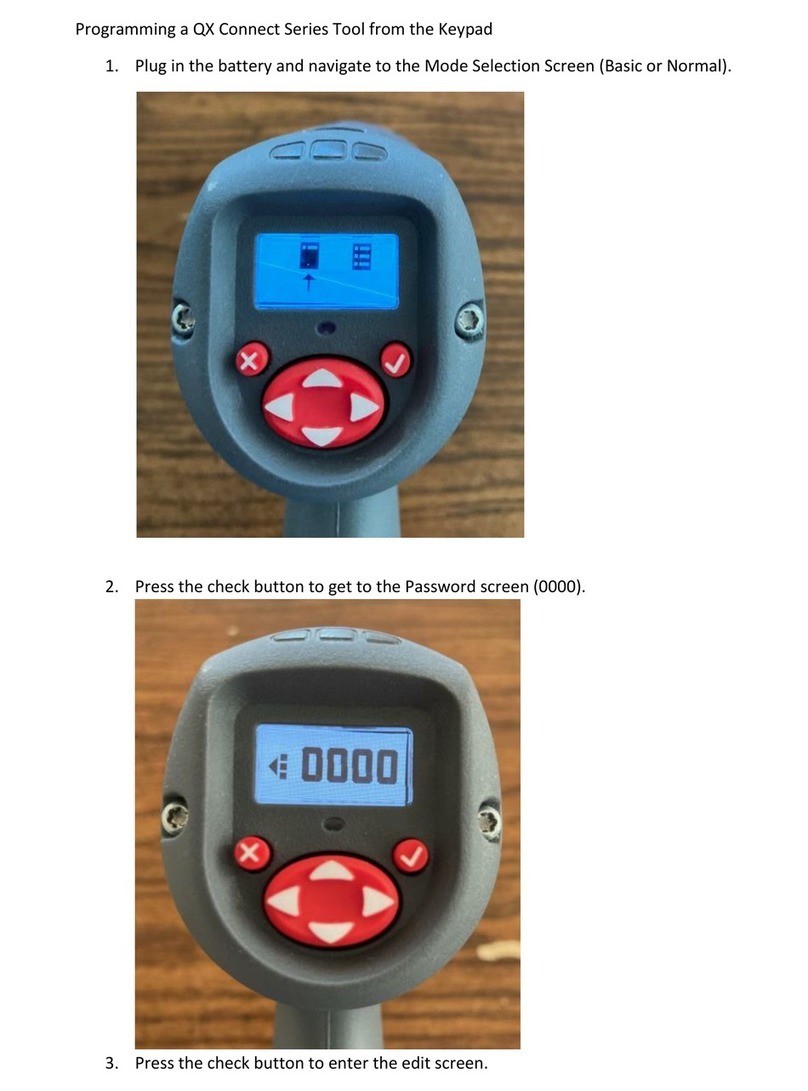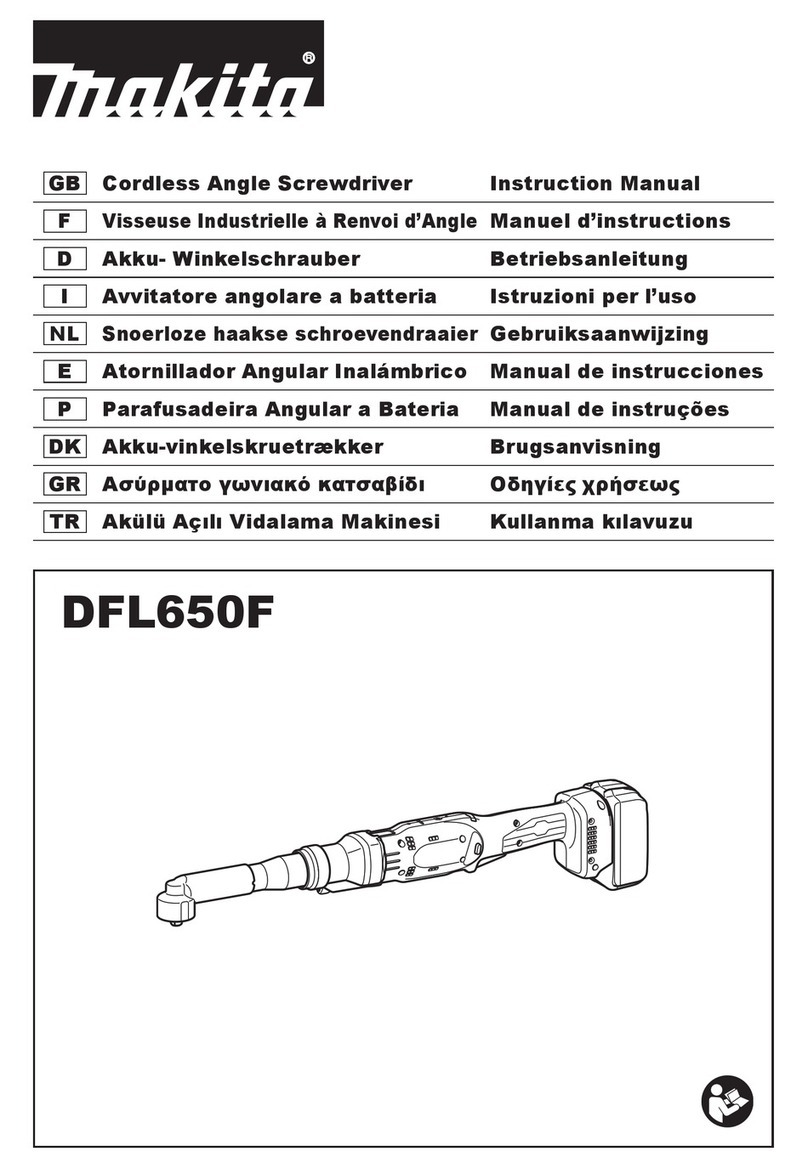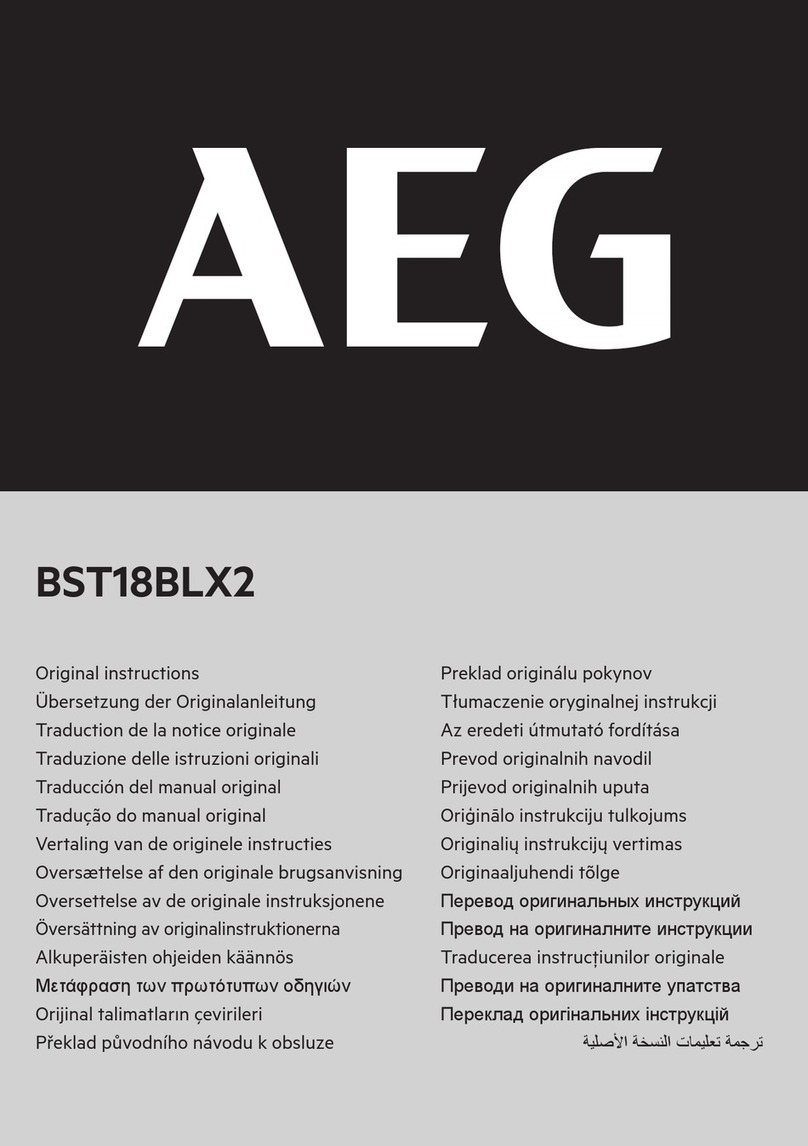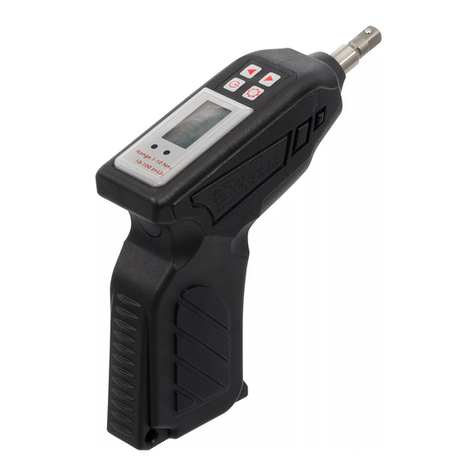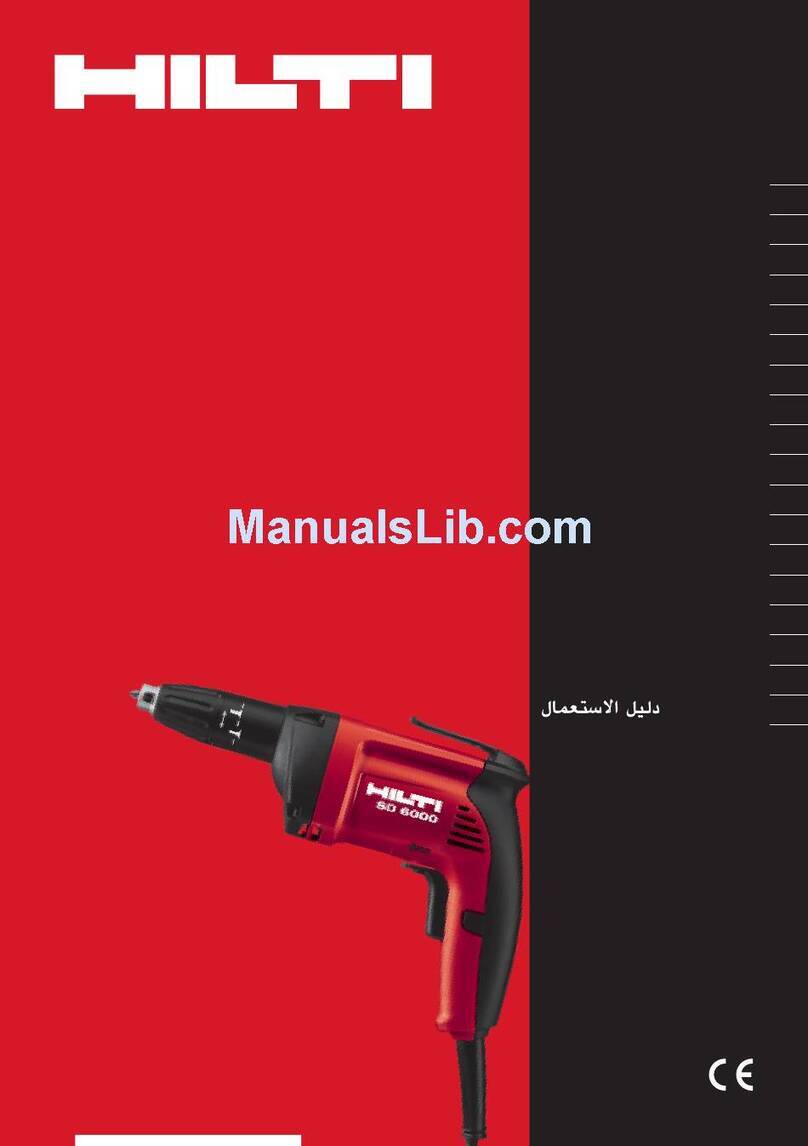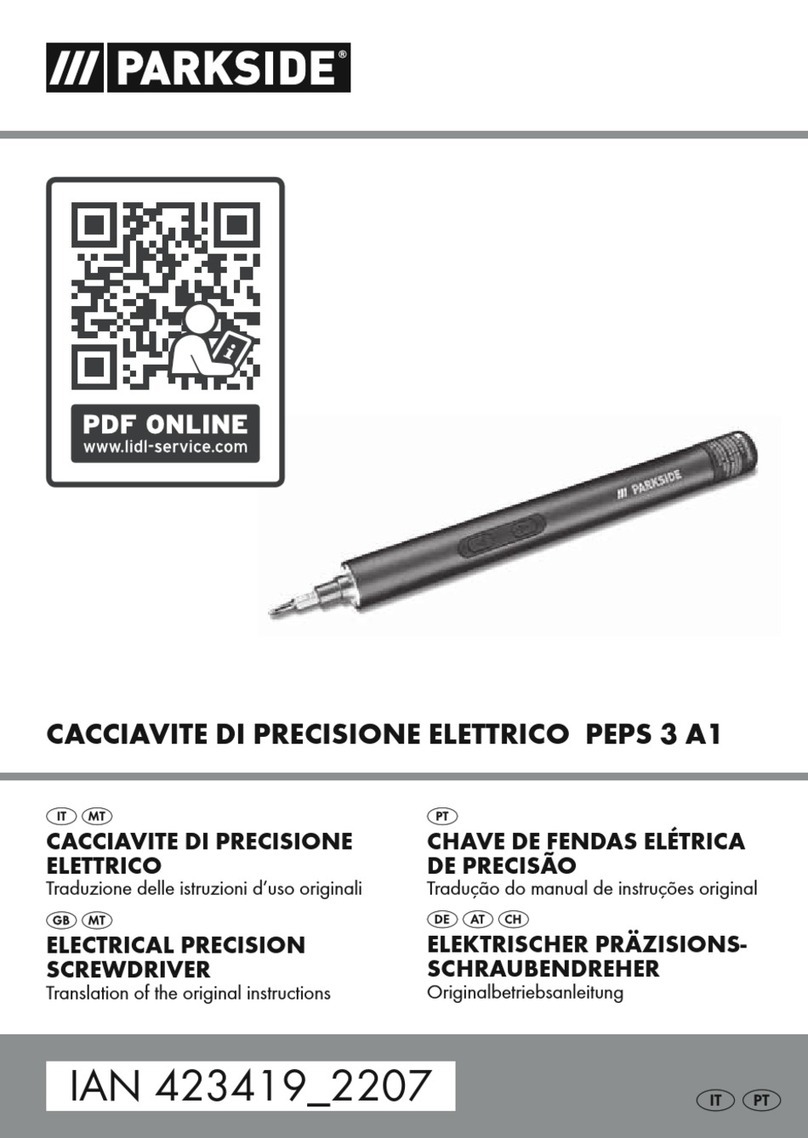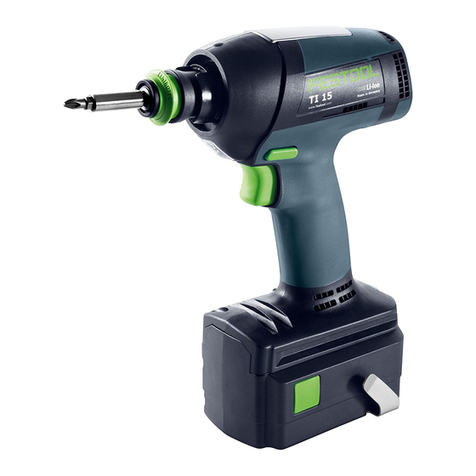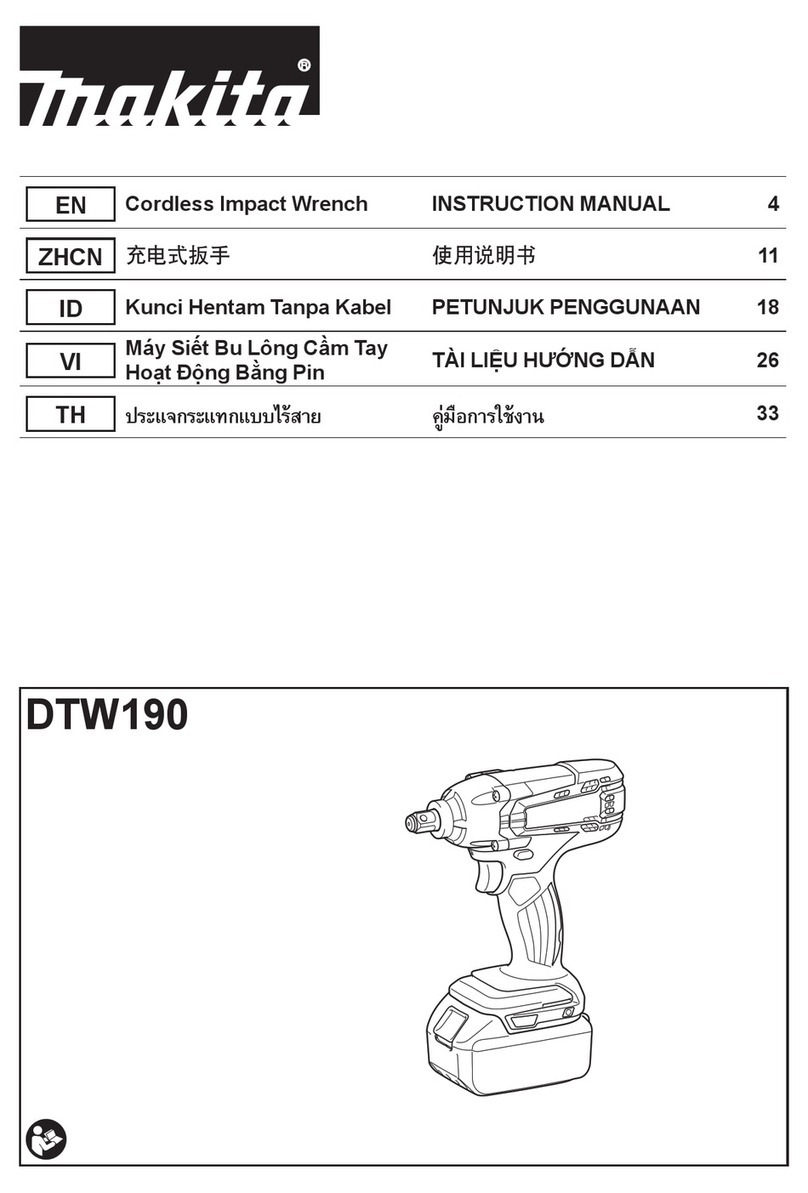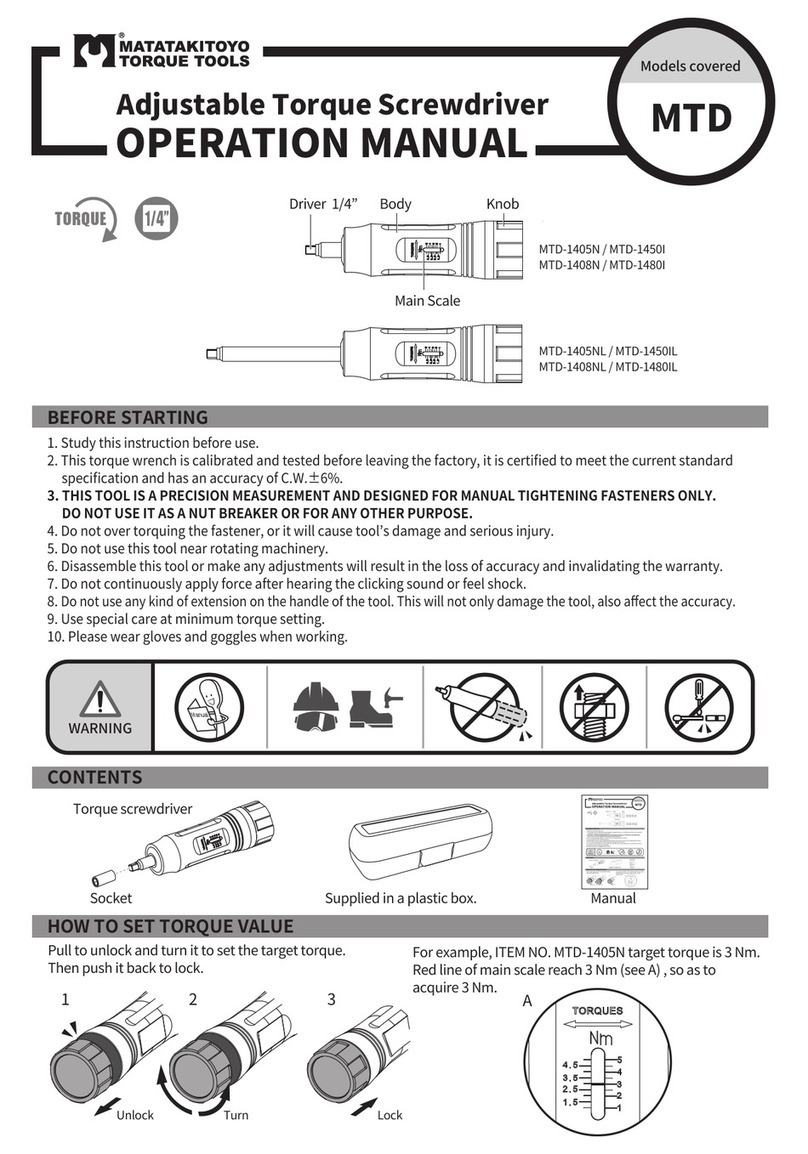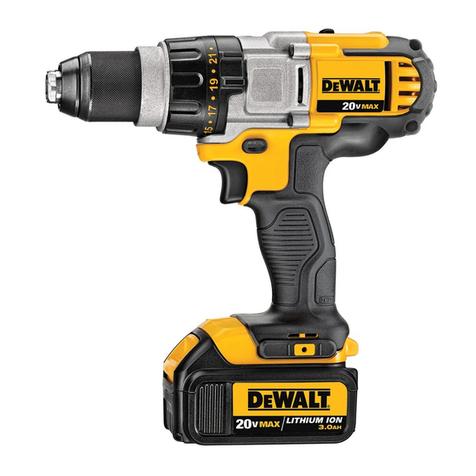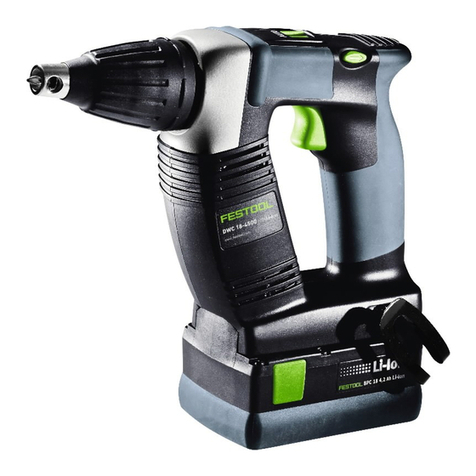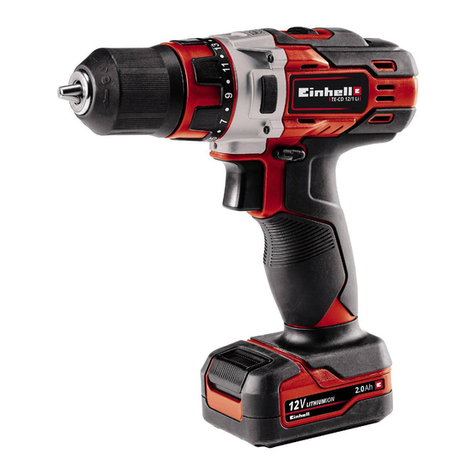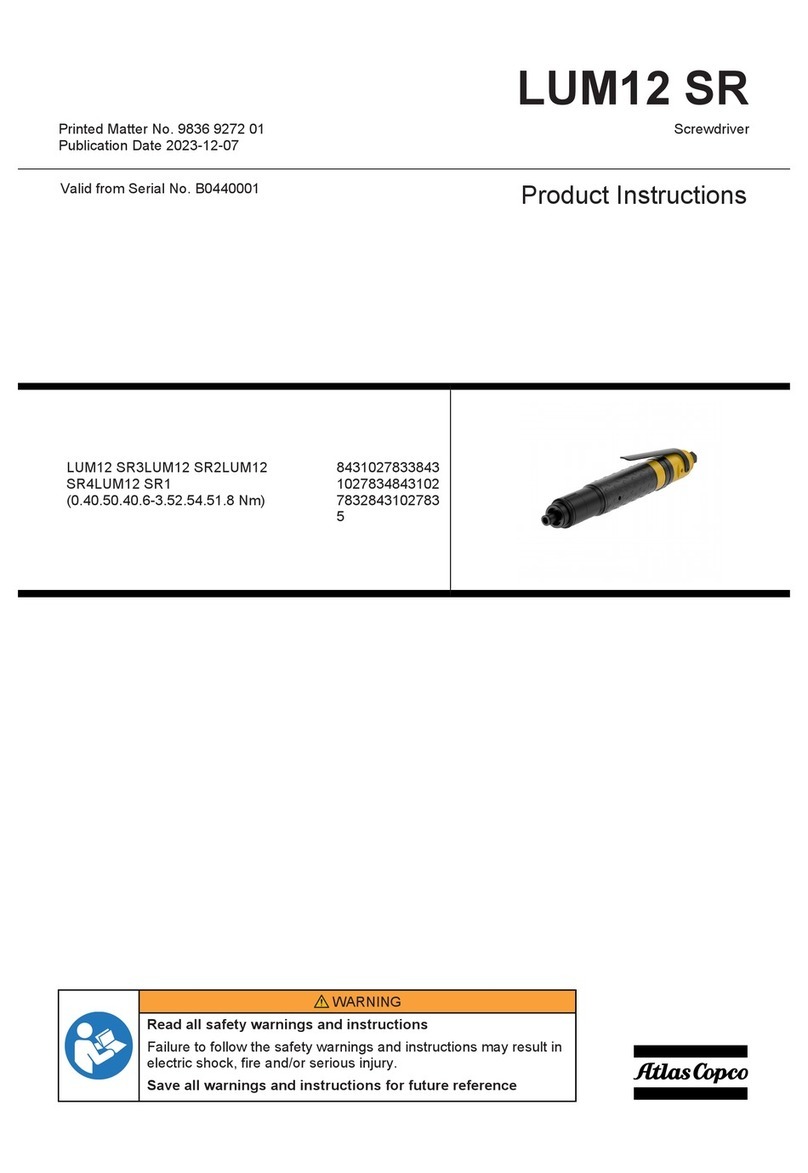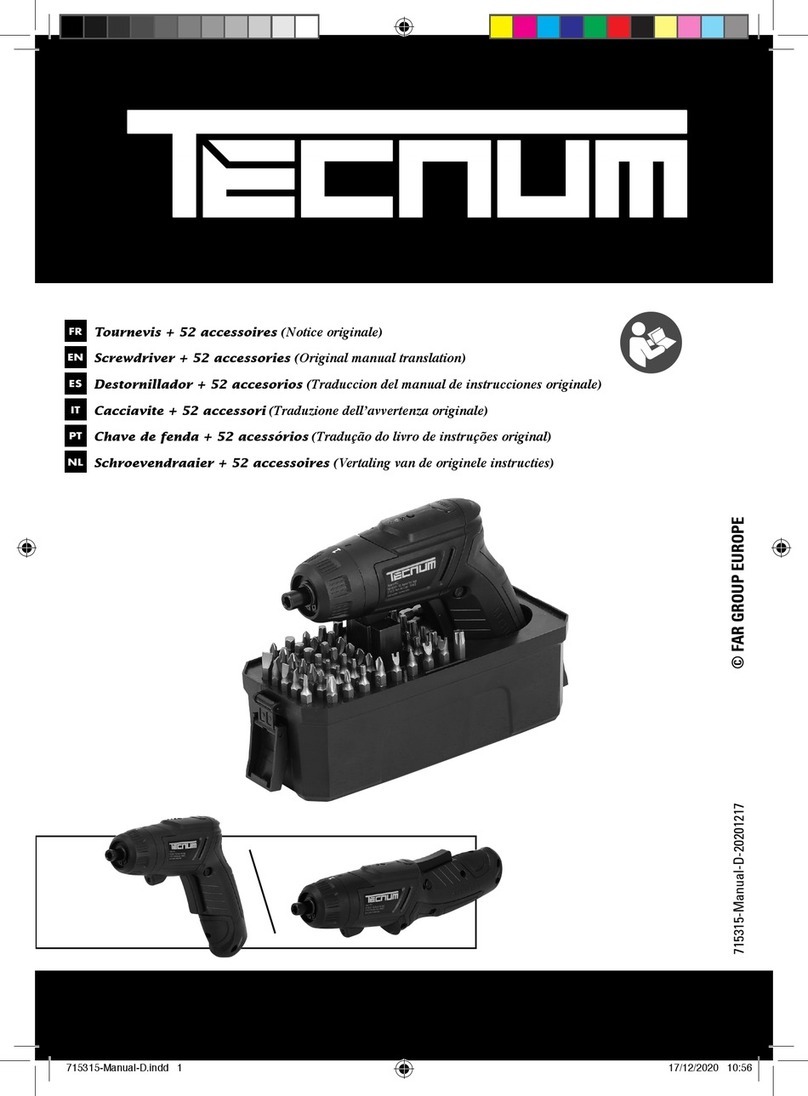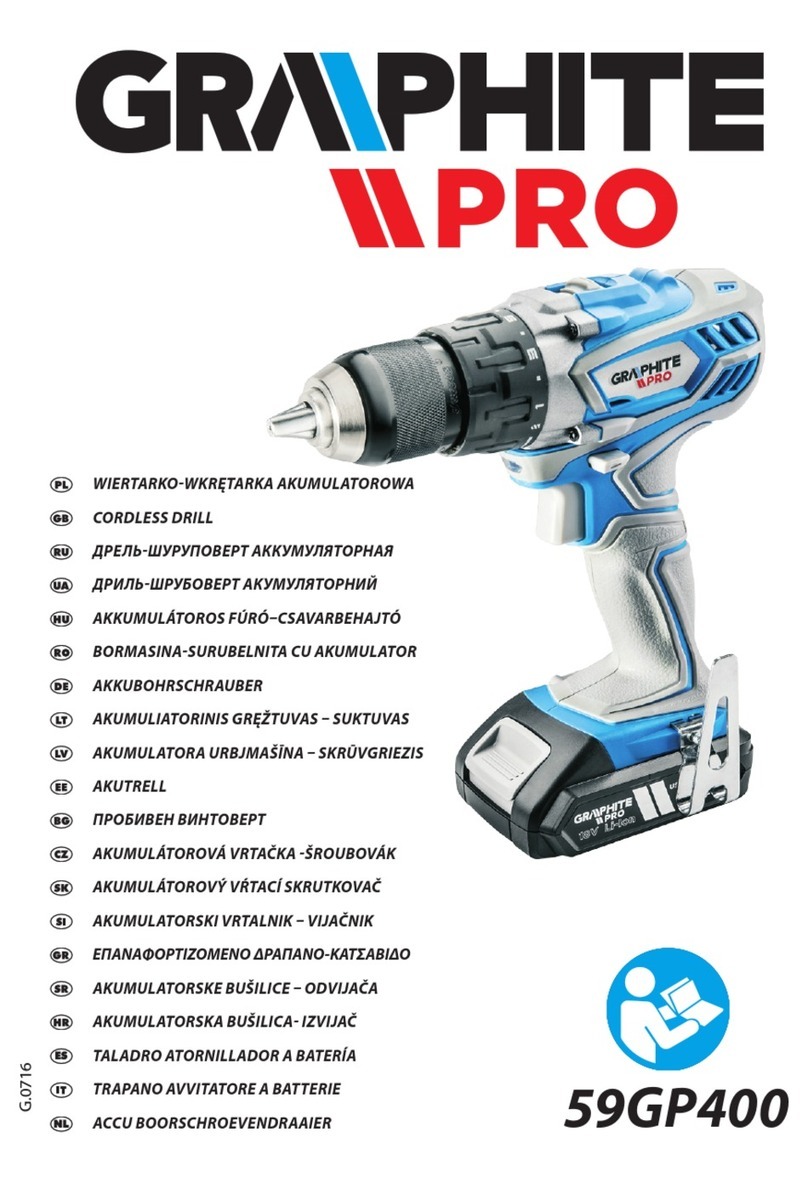
16575268_ed2 5
Start the Adjusting Nut (214), indented side rst, onto the Holder
and run it nger tight against the compression of the Spring.
Install the Bit Holder Stop (216) in the groove.
Assembly of the Attachment, Gearing and Motor
109
107
110
105 102
103 111
101
104
106
108
(Dwg. TPC400)
Slip the Rear End Plate (102) on the rear hub of the Rotor (101)
and install the Retainer (103) in the groove.
Hold the Rotor vertically and clamp the short hub in leather-
covered or copper-covered vise jaws.
Insert a Vane (105) in each slot.
Place the Cylinder (104), front end up, over the Rotor and onto
the Rear End Plate. To determine which end of the Cylinder is the
front end, hold the Cylinder horizontally, facing one end. Position
the external groove for the Dowel (110) at the top as shown in
the motor illustration. If the air ports through the cylinder wall
are in the bottom right quadrant, you are facing the front of the
Cylinder. When assembling the motor, be sure to properly install
the Cylinder. The motor will not operate properly if the Cylinder
is inverted.
Slip the Front End Plate (106) over the rotor shaft. Press the Front
Rotor Bearing (108) into the Bearing Housing (107), and slide the
Bearing, followed by the Retaining Washer (109), onto the shaft.
Obtain a sti steel rod 3/32”(2.3 mm) diameter and approximately
10” (254 mm) long to use as an assembly dowel.
Align the dowel groove in the Rear End Plate (102), Cylinder (104)
and Front End Plate (106) with the dowel hole through the Rotor
Bearing Housing (107) and insert the rod.
Enter the Rear End Plate Gasket (111) into the Motor Housing (1
or 51), positioning the Gasket smoothly on the back bore so that
the dowel notch in the Gasket aligns with the dowel hole in the
Housing.
Enter the end of the assembly dowel in the dowel hole and slide
the motor assembly into the Housing. This is a sliding t and if
proper alignment is maintained, the assembly will enter under
only slight nger pressure. Do not drive, or otherwise force the
motor into position.
Replace the assembly dowel with the Cylinder Dowel (110). Make
sure the Cylinder Dowel is entered into and remains in the dowel
hole in the Housing. When in proper position, approximately 3/32”
(2.3 mm) of the Dowel protrudes from the face of the Bearing
Housing. If it is not in the hole, it will protrude approximately
7/32” (5.5 mm).
Work the Seal Support (119), large end rst, over the spindle shaft
and against the gear frame face. Follow with the Seal (120) and
the Grease Shield (121).
Install the Spindle Bearing (122), sealed side rst, over the spindle
shaft. Firmly support the Spindle (118) and press, do not drive,
the Bearing into position using an arbor that will contact only the
inner ring of the Bearing.
Slide the Ring Gear (112) into the Motor Housing (1 or 51), making
sure the Cylinder Dowel (110) enters one of the notches in the
end of the gear.
For N or J ratio, slide the Rotor Pinion Spacer (113) followed by
the Rotor Pinion (114) onto the spline shaft on the Rotor (101).
5.
6.
1.
2.
3.
4.
5.
6.
7.
8.
9.
10.
11.
12.
13.
14.
For N ratio, slide a Gear Head Planet Gear (116) (13 teeth) onto
each of the three gear shafts on the Gear Head (115). Enter the
assembly into the Ring Gear (112) and slide it into engagement
with the Rotor Pinion. Slip the Bearing Retainer Washer (117) over
the spline on the Gear Head.
For all ratios, slide a Spindle Planet Gear (123) onto each of the
three gear shafts on the Spindle (118) and slide the assembly
into the Ring Gear and into engagement with the Rotor Pinion
or Gear Head.
In N ratio, a Gear Head Planet Gear (116) has 13 teeth and a
Spindle Planet Gear (123) has 14 teeth. Do not mix, mismatch
or switch locations with these small gears when reassembling
a Tool.
17. For Screwdrivers with No. 5C1, 5C3 or 5P1 Attachment, slide
the Clutch Driver (206 or 401) onto the Spindle (118) and install
the Retainer (207 or 402) in the groove.
For Screwdrivers with No. 5P1, Attachment, slide the Front
Jaw (406) onto the Bit Holder (407) and install the Front Jaw
Retainer (405) on the Bit Holder.
18. For Screwdrivers with 5C1 or 5C3 Attachments, slip the
Disengaging Plunger (222) and Plunger Spring (223) into the Bit
Holder (208) making sure the Plunger slides freely.
For Screwdrivers with 5P1 Attachments, slip the Plunger
Spring (404) and Disengaging Plunger (403) into the Bit
Holder (407) making sure the Plunger slides freely.
19. For Screwdrivers with 5C1 or 5C3 Attachments, enter the
opposite end of the Spring into the spindle bore while entering
the end of the Clutch Housing (201) into the Motor Housing
(1 or 51).
For Screwdrivers with 5P1 Attachments, enter the opposite
end of the Plunger into the spindle bore while entering the end
of the Clutch Plunger (409) into the Motor Housing (1 or 51).
For Screwdrivers with 5D1 Attachments, slide the Bit Holder
(303) onto the Spindle (118) while entering the end of the Clutch
Housing (305) into the Motor Housing (1 or 51).
20. Using a wrench, snug the Coupling Nut onto the Motor Housing.
Bump the back of the Motor Housing to seat the internal parts as
the Coupling Nut is tightened.
21. When the Coupling Nut is snug, connect an air supply line to
the Inlet Bushing (18 or 71) and check performance. If the Tool
does not function properly, loosen the Nut and realign the
components. If the Tool does function properly, tighten the Nut
to a minimum of 25 ft-lb (33 Nm) torque.
15.
16.

